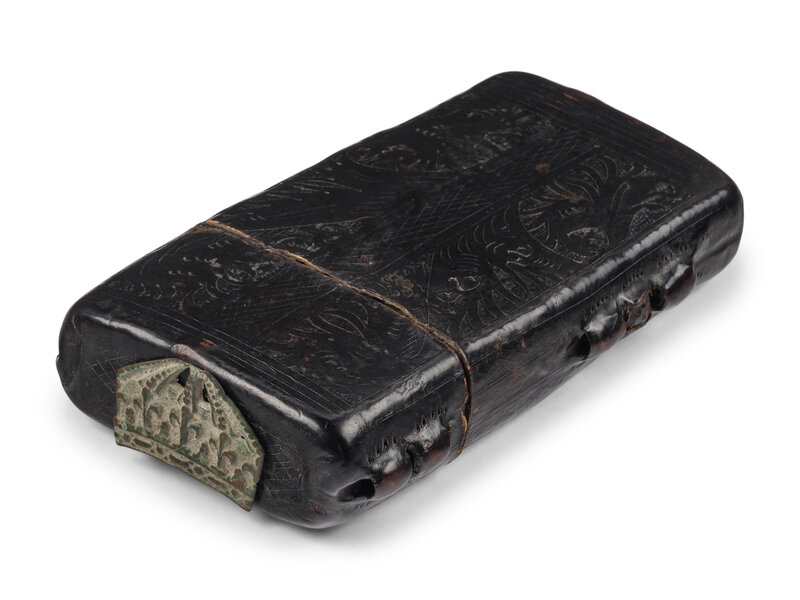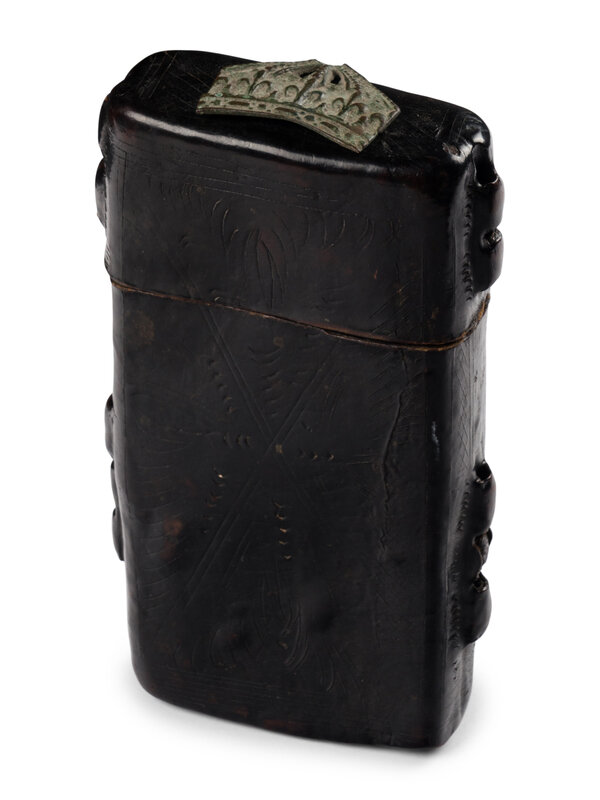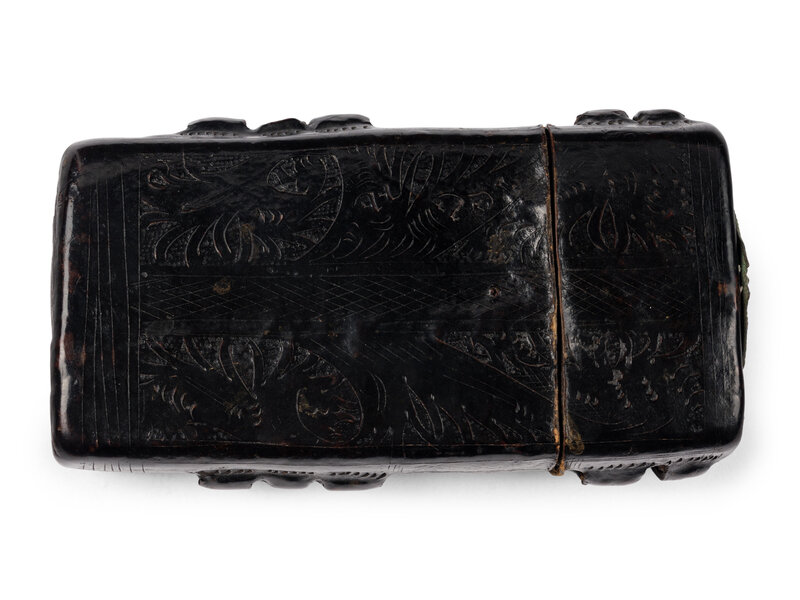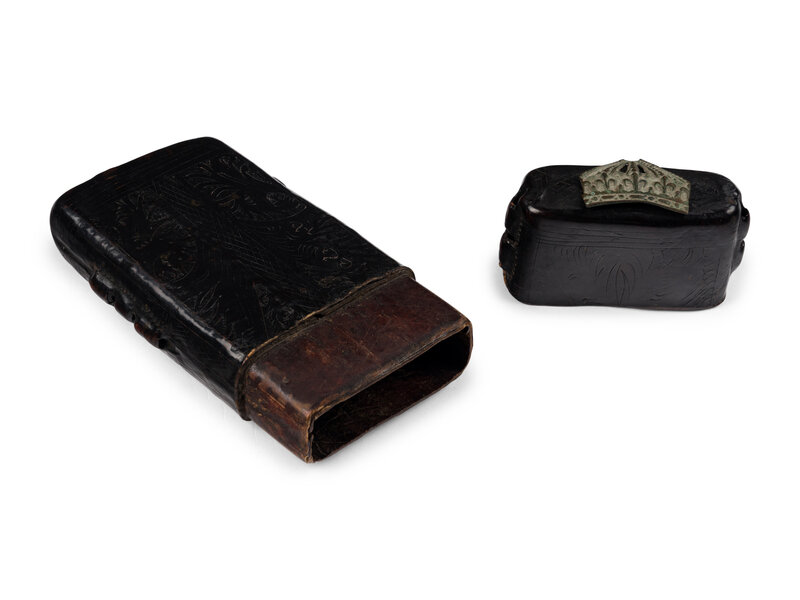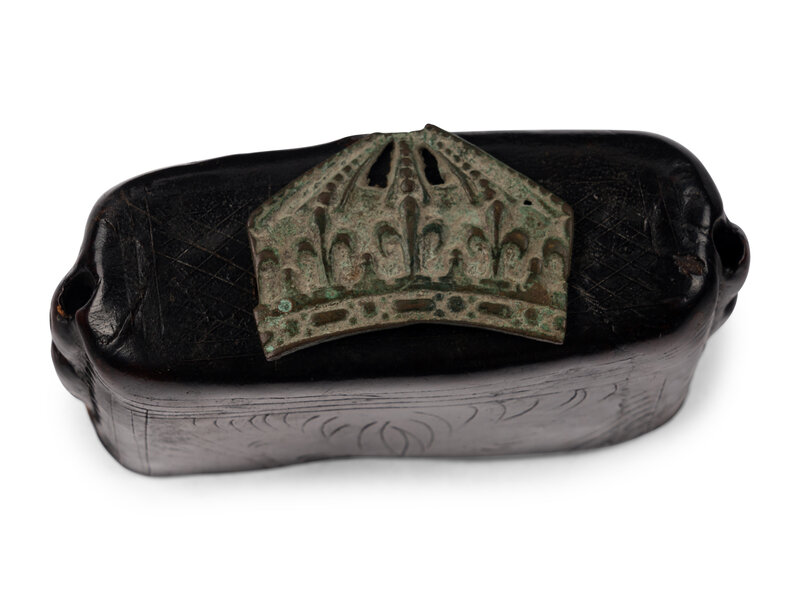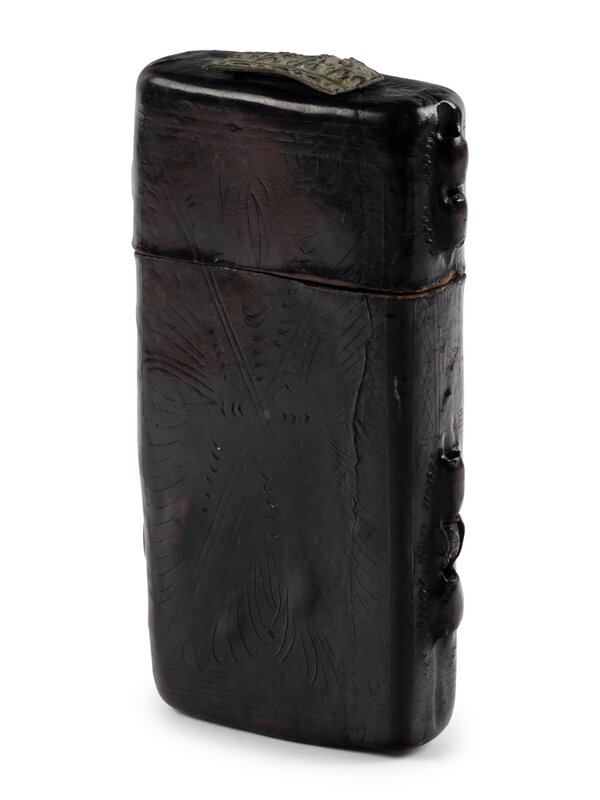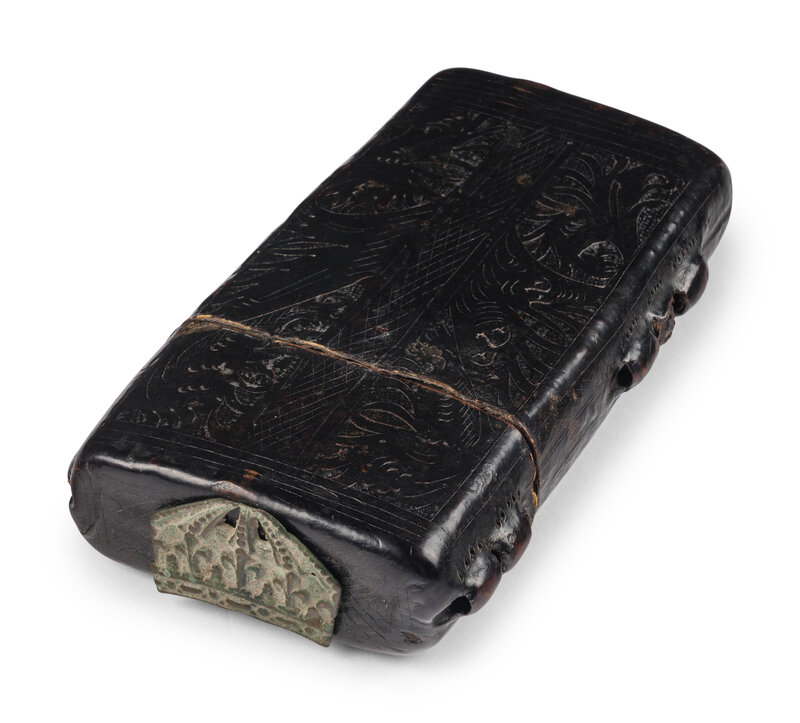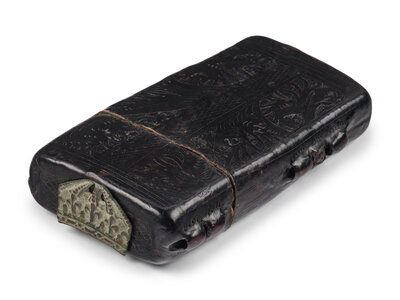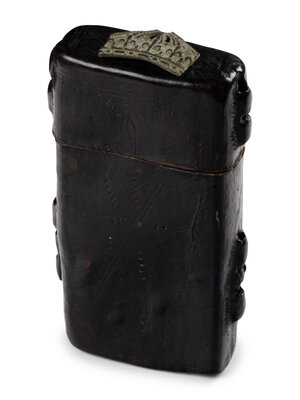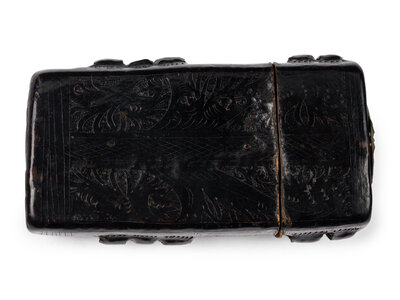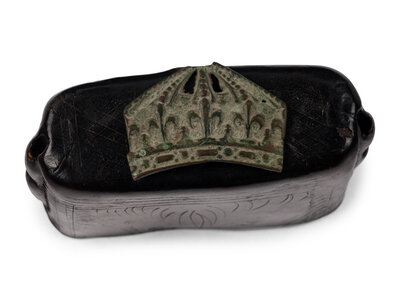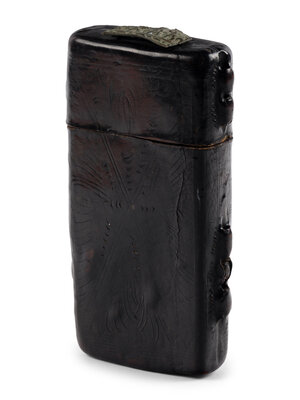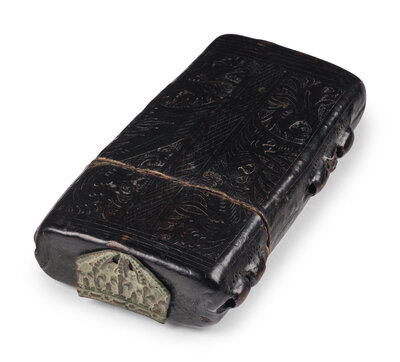Condition Report
Contact Information
Lot 70
A BOOK BOX
Book box, dark brown cuir-ciselé tooled leather [Austria (?), c. 1475-1500]
Book box, dark brown cuir-ciselé tooled leather [Austria (?), c. 1475-1500]
Sale 2033 - Western Manuscripts and Miniatures
Jun 27, 2024
10:00AM CT
Live / Chicago
Own a similar item?
Estimate
$3,000 -
5,000
Lot Description
A BOOK BOX
Book box, dark brown cuir-ciselé tooled leather [Austria (?), c. 1475-1500]
Book box, dark brown cuir-ciselé tooled leather [Austria (?), c. 1475-1500]
This exceptionally rare and beautiful object demonstrates how medieval books were used and carried from place to place by their readers in satchels. The cuir-ciselé technique and the decoration of scrollwork and foliage are typical of leather book boxes from Southeastern Germany and Northern Italy.
175 x 100 x 30 mm. Dark brown leather intricately worked in cuir-ciselé over thin beveled wooden boards, decorated on both sides with elaborate scrollwork and thick foliage, framed on the front side with crossed diagonal lines, swirling foliage on the other, top of the lid similarly work, with an attached metal crown, most likely a pilgrim’s badge, loops remaining on each lateral side intended for straps, brown lining (missing straps, else in excellent condition with a rich patina, apparently unrestored, lid fitting securely).
This book box is probably of Austrian (or perhaps German) origin and uses the technique of embossing with tiny metal tubes (a punch and chiseling hammer). E. Ph. Goldschmidt records a similar Viennese example on a book binding dated 1482 in his collection (1928, pl. X). A book for a copy of sermons from Salzburg, Austria, also preserves similar geometric designs in the center front (Baltimore, Walters Art Museum, W.740). This small box may have contained a book of Sermons, a Book of Hours, or a Confessional. The metal crown affixed to the tip lid could well be a contemporary pilgrim’s badge and illustrates the everyday use of such objects, carried around in a satchel and used throughout the day.
The special technique of embellishment known as cuir-ciselé (or carved leather) was
practiced only during the fifteenth century and only in certain parts of Europe:
Germany, Spain, and to a lesser extent in Italy. It entails cutting a design into dampened
leather instead of tooling or stamping it. After outlining the design with a pointed tool,
the leather is dampened and then the design is brought into relief by stamping a
succession of dots into the leather very close together, which depresses the background.
Although the technique was known already in the seventh century, it was practiced with
frequency much later. All sorts of leather objects are extant made with this technique,
including book boxes, bindings, pen and other object holders, and even armor.
Provenance
(1) The cuir-ciselé technique was practiced mostly in Southeastern Germany, in the Austrian Tyrol, and in Lombardy, Northern Italy. This example compares with several Austrian examples, which suggests it was created there in the late fifteenth century.
(2) John Louis Feldman (1957-2021), Colorado and New York, book and manuscript collector, whose collection is now found at several public institutions, including the Metropolitan Museum of Art, the University of Colorado at Boulder, and the Louvre Abu Dhabi.
LITERATURE
Further literature, see: Ernst Philip Goldschmidt, Gothic and Renaissance Bookbindings, exemplified and illustrated from the author’s collection, Boston and New York, 1928; Friedrich A. Schmidt-Künsemüller, Corpus der gotischen Lederschnitteinbände aus dem deutschen Sprachgebeit, Stuttgart 1980; Otto Mazal, Europäische Einbandkunst aus Mittelalter und Neuzeit, Graz, 1990; Les Enluminures, cat. 2, no.33; Tammaro di Marinis, La Legatura artistica in Italia, Florence, 1960.
Freeman’s | Hindman thank Senior Consultant Sandra Hindman and Elliott Adam for their assistance in preparing this sale.
